
Ge Da Tang (疙瘩汤), also called “dough drop soup,” is a homestyle dish that you probably wouldn’t find on a restaurant menu. It’s a rustic Northern Chinese staple made with tiny dough bits simmered in chicken broth with ground pork, tomato, bok choy, and soft egg ribbons. It is a hearty one-pot meal that’s cozy, filling, and deeply satisfying in the way only homestyle Chinese cooking can be.
I grew up eating versions of this soup throughout the colder months. Every family has their own way of making it, with different bases, proteins, and combinations of vegetables. But the heart of the dish is always the same: a simple flour-and-water dough stirred into a bubbling pot to create chewy, irregular little pieces. They soak up the savory broth and make the soup substantial enough for lunch or dinner. My grandma likes to add ground pork for texture and to create a richer soup. She also likes to use tomatoes as a part of the chicken soup to brighten up the dish, just like she did in her Chinese gravy noodles.
Ingredients
Ge Da Tang uses pantry staples that you can easily find in any grocery store.
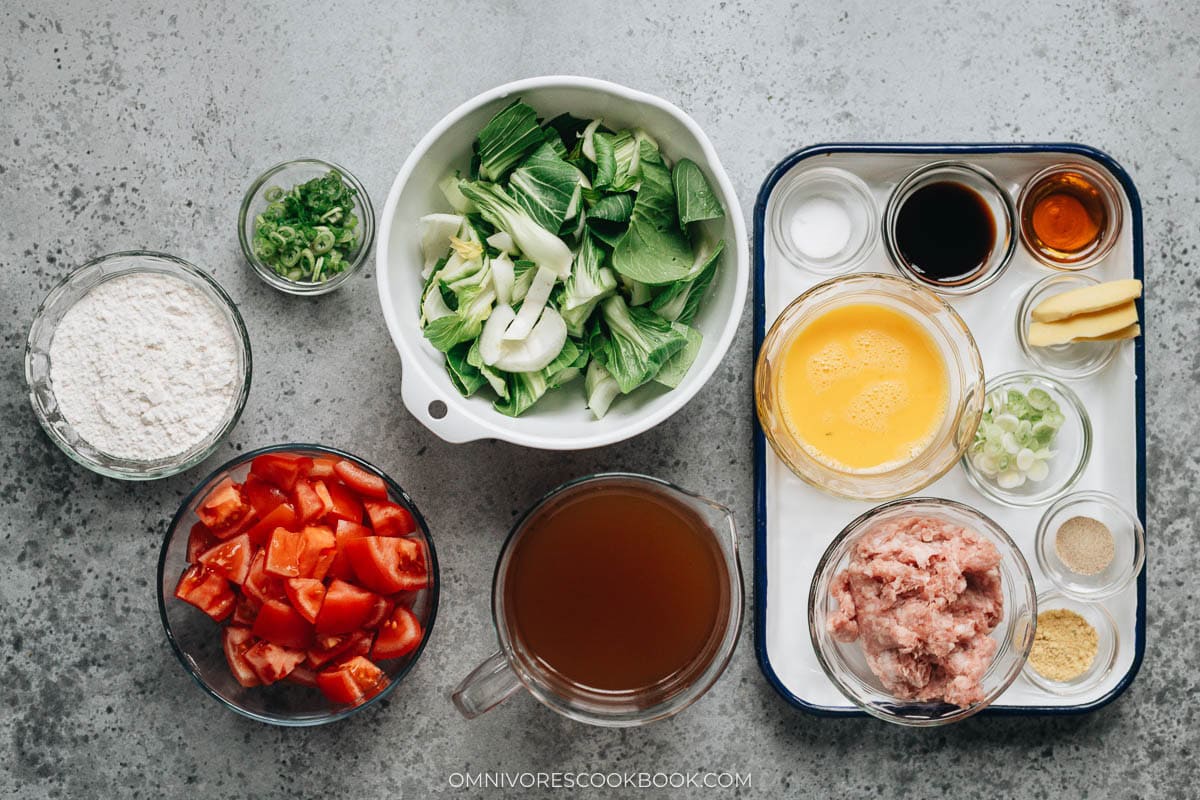
- Flour and water: The dumplings are made from these two ingredients.
- Ground pork: It adds texture and richness to the soup. Other ground meats can be used here as well.
- Scallion and ginger: Fresh aromatics are the key ingredients to add flavor to the soup.
- Chicken stock, light soy sauce, sugar, chicken bouillon and white pepper: The base of the soup is quite simple, and will taste amazing combined with the aromatics and the flavor of the pork.
- Tomato and bok choy: They are my favorite vegetables for the soup, adding color and texture. Tomato is also used as a part of the soup base to lend its bright flavor.
- Eggs: It’s a very common ingredient in Ge Da Tang, to create the egg drop soup effect.
- Toasted sesame oil: To finish up the soup, adding nutty flavor.
Other variations
There are many ways to put together Ge Da Tang. Some people prefer the vegetarian version, and some use shrimp as the main protein. And you can always switch up the vegetables depending on what you have on hand. Here are some suggestions.
If you like a lighter soup, shrimp is a great ingredient to replace the ground pork. It adds a light seafood flavor to the soup and a nice texture.
Other tender and mild vegetables such as spinach, napa cabbage, choy sum, zucchini and pea shoots are great options to replace the bok choy. Note, you need to adjust the cooking time accordingly if using different vegetables.
If you prefer a vegetarian version, you can use vegetable stock and mushroom powder. I also recommend using rehydrated shitake mushrooms to replace the pork, to further enhance the flavor of the soup.
How to make
Making Ge Da Tang is quite straightforward, but it does take a little practice if you want to make evenly sized dough drops. The good news is that, even if yours do not come out perfectly, the soup will still be very delicious.
1. Make the dough drops by slowly mixing water into the flour, stirring with a pair of chopsticks. You want evenly sized dough flakes that are anywhere from pea sized to blueberry sized. The key is to add the water very slowly, and only onto the dry flour. And you also should pause in between, to mix the flour thoroughly. Try not to let large clumps of dough form, since our goal is to create small dough pieces. But no worries if your dough clumps together. You can always tear them into smaller pieces as you add them to the soup.
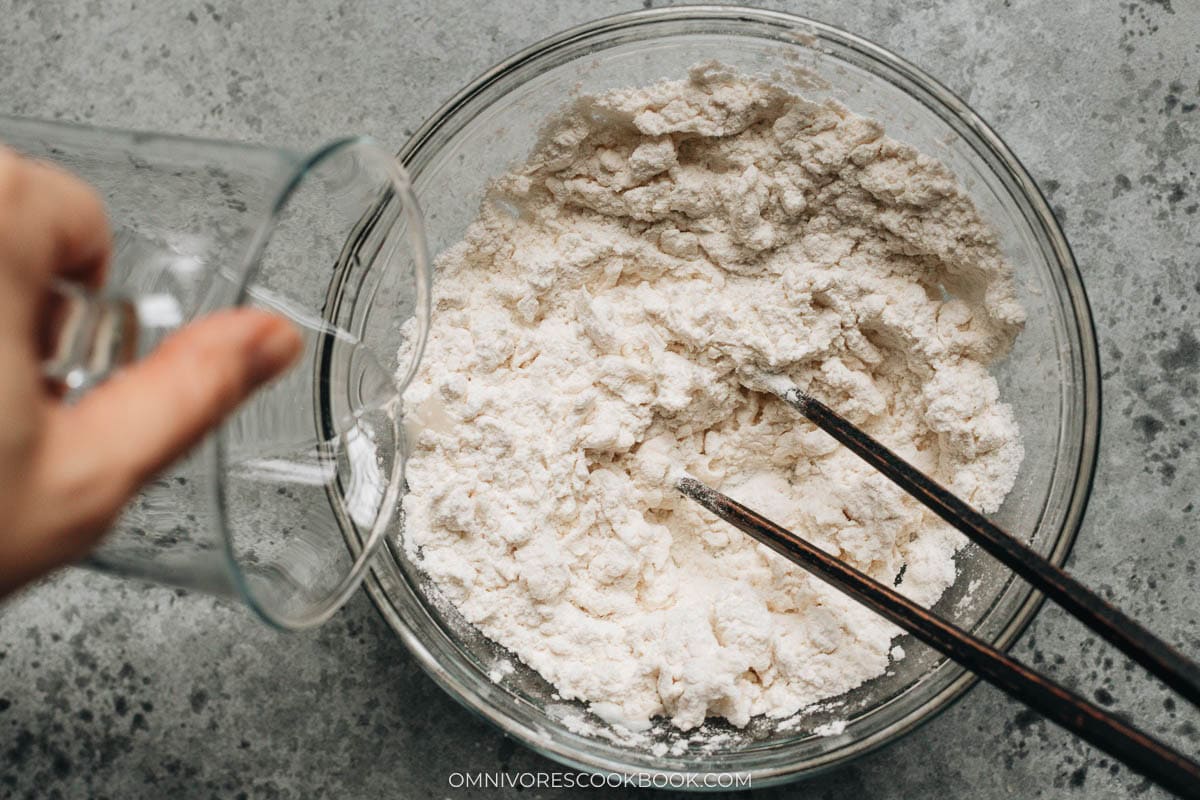
Once you finish mixing, your bowl should have little or no dry flour left. And the dough flakes should be quite small and even in size, without sticking together too much.
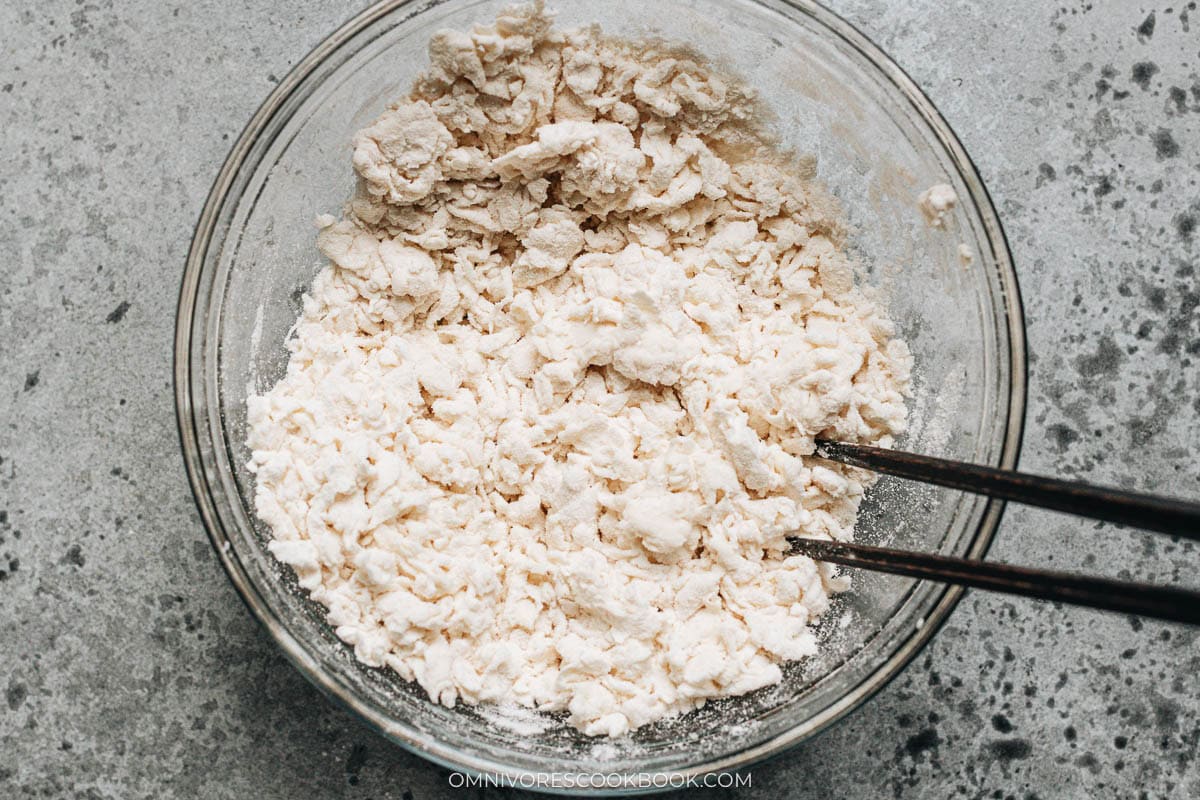
2. Brown the pork. Chop the pork into small pieces and cook until slightly browned on the surface. The pork will add a nice flavor to the broth.
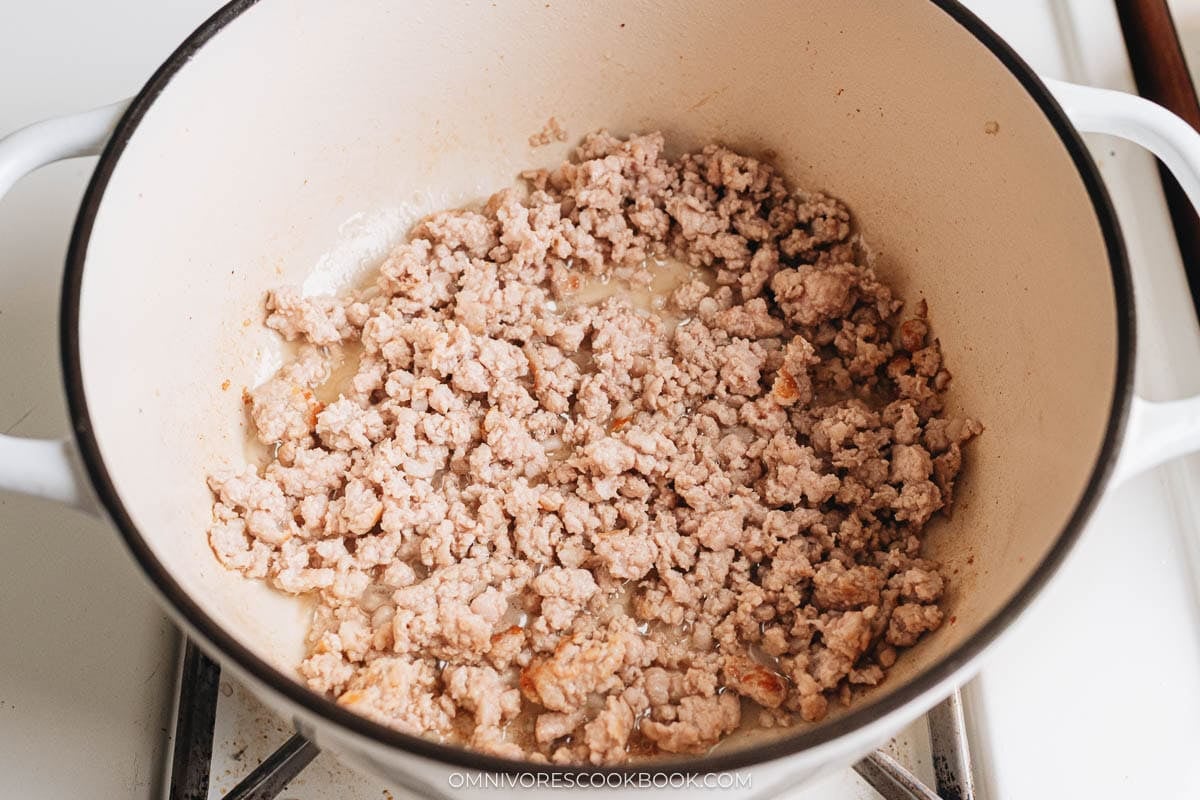
3. Cook the aromatics and tomato. Cook the aromatics first to bring out the flavor, then cook the tomato with soy sauce and sugar until tender. The tomato will have some texture at the end, but will mostly dissolve into the soup to add a bright flavor.
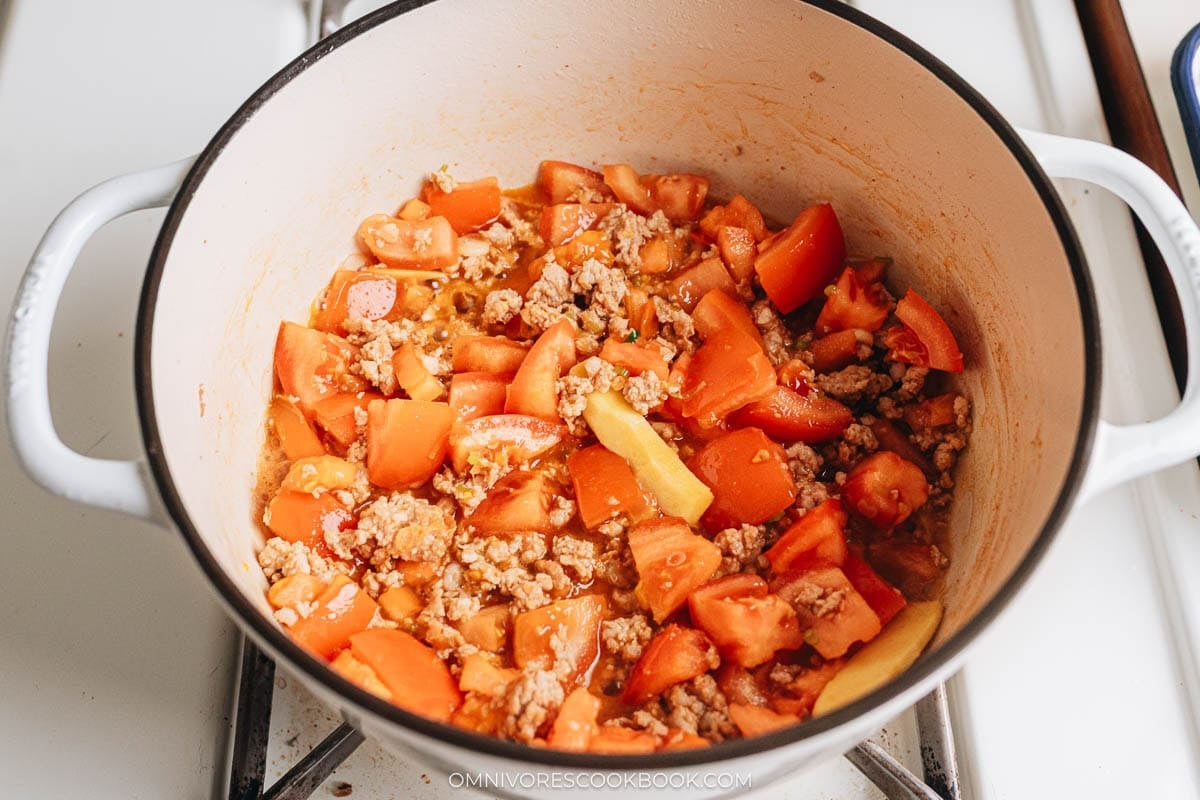
4. Cook the dough drops. Slowly add the dough pieces into the soup, spacing them out to avoid clumping together. If there are large pieces of dough, you can also use your hands to tear them into smaller pieces and add them to the soup. After adding all the dough pieces, use chopsticks to stir the dough pieces so they don’t stick together.
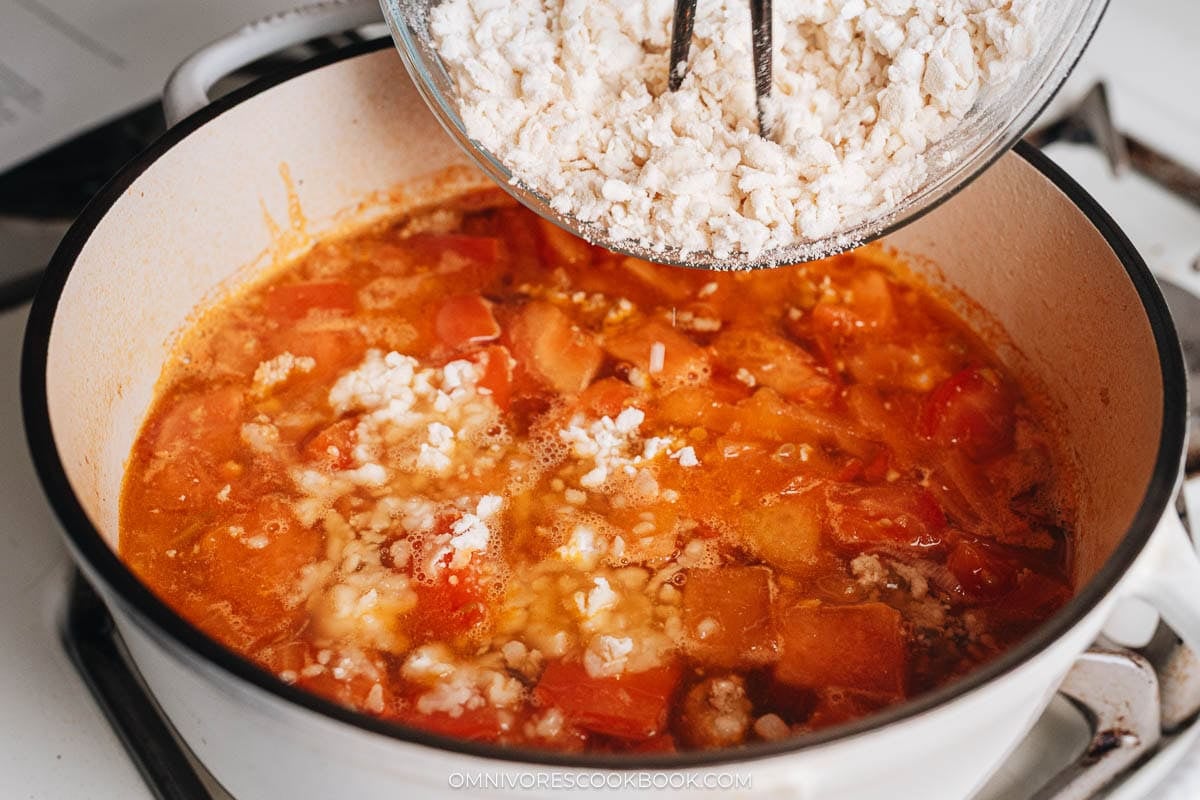
5. Cook the bok choy. Note, the bok choy will keep cooking in the hot soup when you add the eggs. I usually prefer to under cook the bok choy at this stage so they don’t overcook too much at the end.
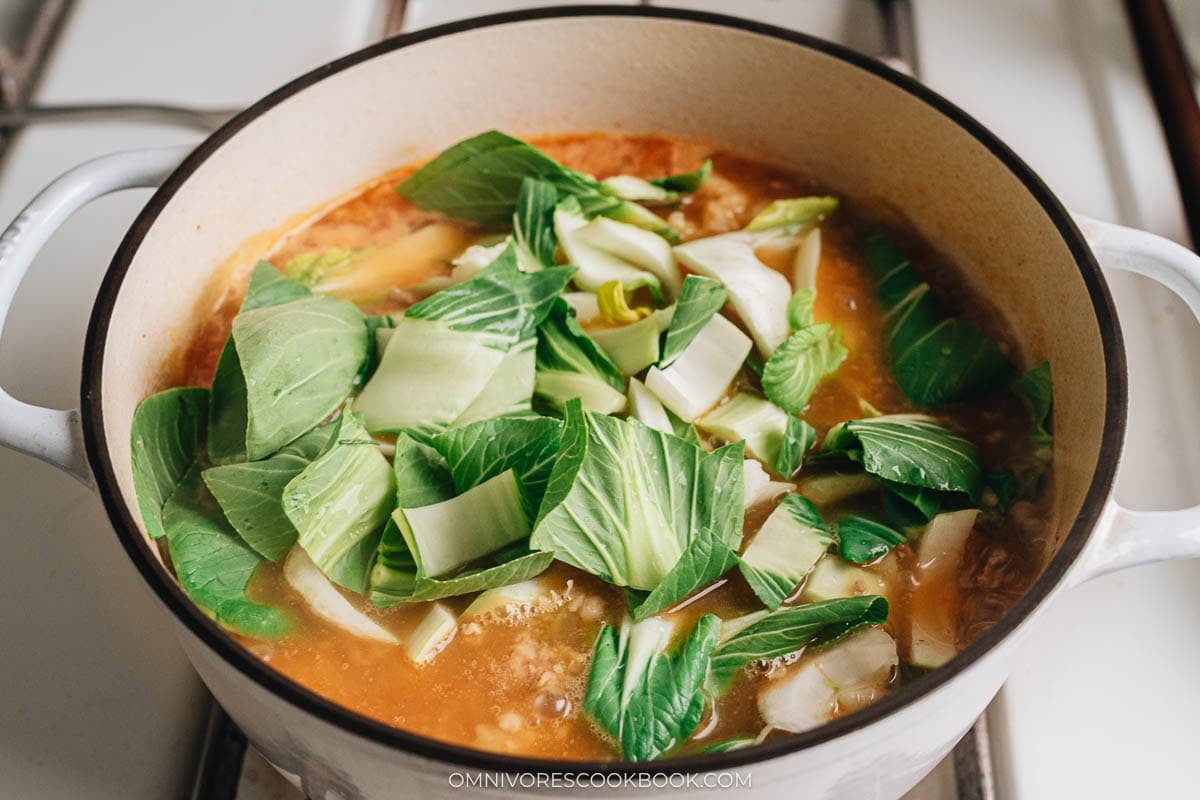
6. Make the egg ribbons by slowly drizzling in the beaten eggs and slowly moving the bowl they’re in as you pour them into the pot. Once all the eggs are added, let cook for 30 seconds before stirring.

7. Finish and serve. Finally, stir in the sesame oil, white pepper and green onion greens to finish up the soup.
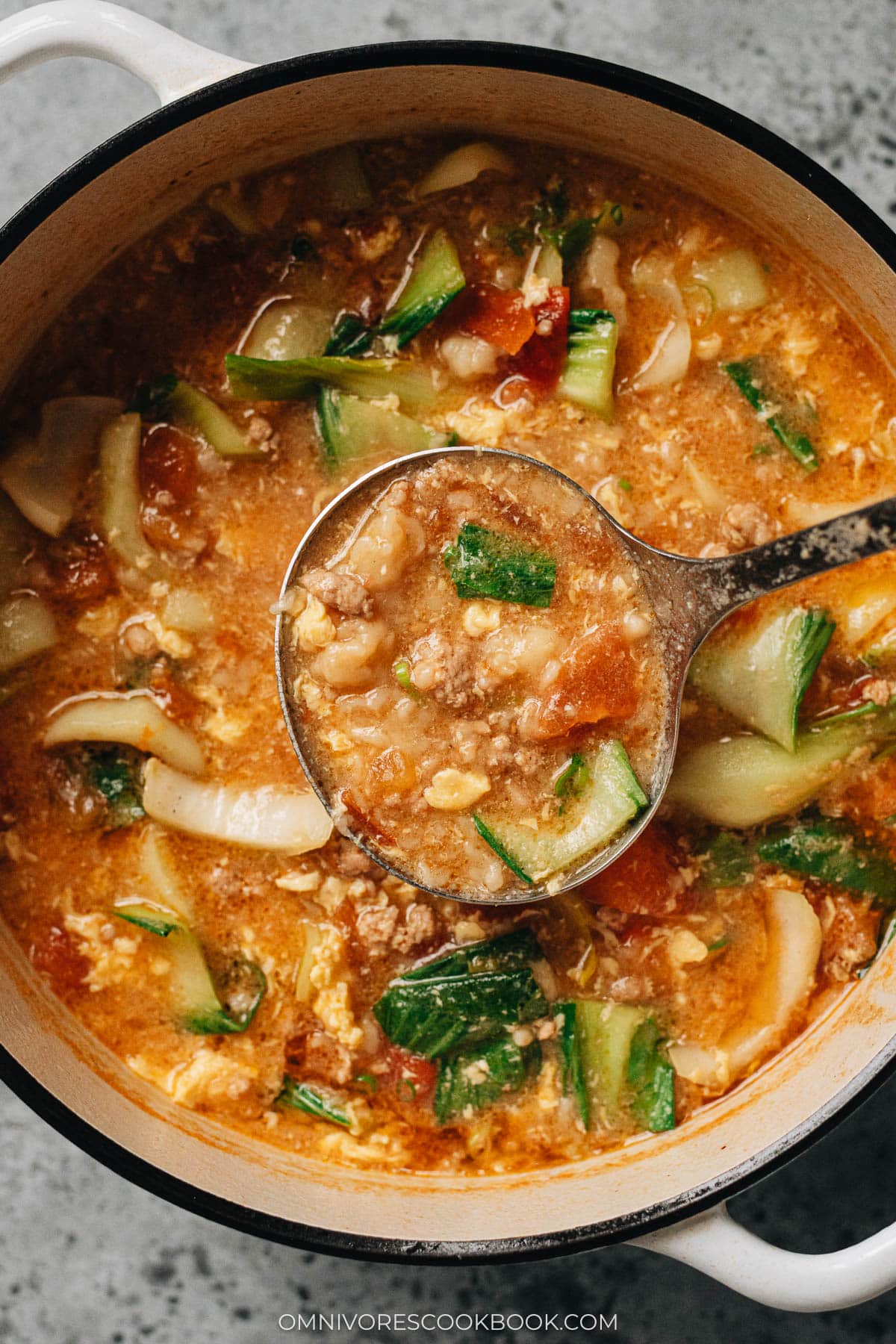
Pro tips
The dough should look rough and uneven. The irregular shapes are the charm of this dish and they will absorb more flavor. Don’t try to make them perfect!
When mixing the dough, chopsticks are better than a spoon. They help create small flakes and prevent the dough from turning into a sticky mass.
You can control the dough texture by making slightly bigger pieces as well. In my recipe, I kept most of the dough drops small, recreating the version that my grandma liked to make. However, some of the larger dough pieces are mixed in and I like the chewy texture of them as well. My husband said he prefers the slightly larger dough texture. So feel free to experiment with the dough size and create your own favorite Ge Da Tang.
How to Serve
Ge Da Tang makes a complete light meal on its own. Pair it with simple sides like smashed cucumbers salad, stir-fried okra, or steamed tofu for a wholesome weeknight dinner.
Note, Ge Da Tang should be enjoyed when freshly made. Because the dough pieces will gradually absorb the soup, the texture will get thicker as time goes by. The dough also loses its texture and the vegetables will wither. It’s definitely not a dish for making ahead.
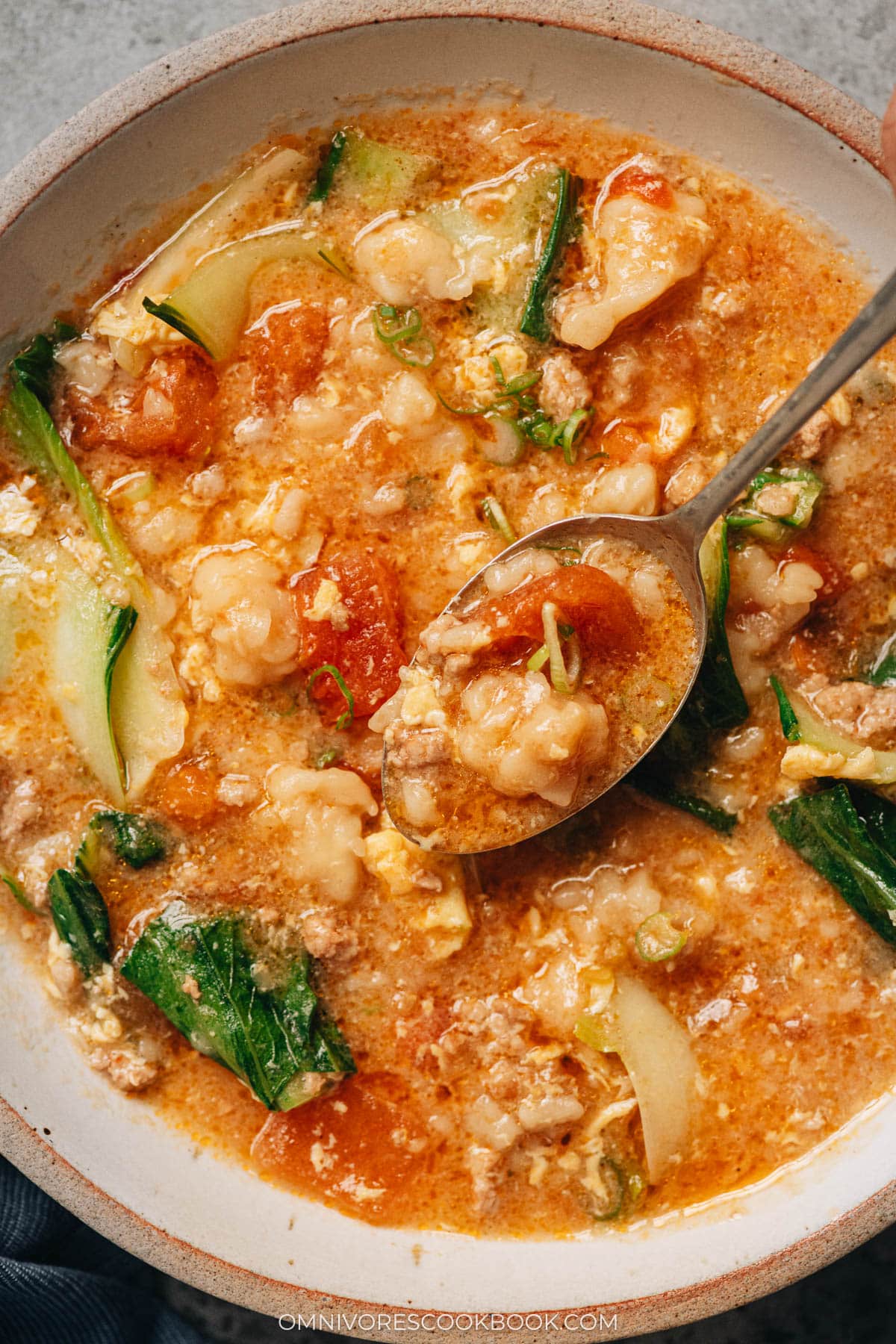
Frequently asked questions
Can I make the dough drops ahead of time?
It’s best to prepare them right before cooking. The tiny pieces can dry out or stick together if left to sit too long.
What should the dough texture feel like?
Each piece of dough should feel dry on the outside and slightly soft but not sticky inside. If the dough feels wet or sticky, sprinkle in a little flour and toss with chopsticks to adjust.
My soup turned cloudy. Is that normal?
Totally normal. The starch from the dough naturally thickens the broth and gives Ge Da Tang its signature body and creamy appearance.
Chinese Cooking Made Easy
Are you new to this website? This free email series is a great place to start. I’ll walk you through a few of my most popular recipes and show you how and why they work. You’ll quickly start to cook better Chinese food in your own kitchen.
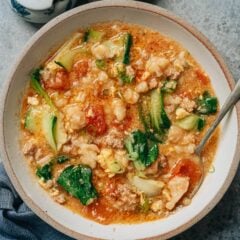
Ge Da Tang (Chinese Dough Drop Soup, 疙瘩汤)
Ingredients
- 1 cup all-purpose flour
- 1/4 cup warm water (*Footnote 1)
- 1 tablespoon vegetable oil
- 1/2 lb ground pork
- 2 scallions , sliced, white and green parts separated
- 2 pieces ginger
- 3 tomatoes , sliced into bite-size pieces
- 1 1/2 tablespoons light soy sauce (*Footnote 3)
- 1/2 teaspoon sugar
- 4 cups chicken stock
- 2 heads baby bok choy , white part sliced into 1/2” pieces and green part sliced into 1” pieces
- 2 eggs , beaten
- 1 teaspoon chicken bouillon powder
- 1/2 teaspoon ground white pepper
- 1 tablespoon toasted sesame oil
Instructions
- Add flour into a big bowl. Very slowly drizzle water in batches onto the dry flour, and whisk with a pair of chopsticks. Try to mix in a way that creates many small dough pieces, without them clumping together. It’s important to add a very small amount of water at a time, and stop, then mix very thoroughly. At the end, there should be little or no dry flour left, and small dough flakes ranging from pea-sized to blueberry-sized (*Footnote 2).
- Heat oil in a medium pot (4-qt) over medium-high heat until hot. Add the ground pork. Cook and chop the pork into small pieces until cooked through and the surface is lightly browned, 4 to 5 minutes.
- Add the scallion whites and ginger. Stir a few times to release fragrance. Add the tomato, light soy sauce and sugar. Cook and stir until the tomato starts to fall apart.
- Add the chicken stock and bring to a boil. Turn to medium heat. Add the dough flakes in by slowly pushing them into the pot, dropping them into empty space so the dough doesn’t clump together. If the dough starts to clump together, immediately use a pair of chopsticks to stir and separate the dough into small pieces. After all the dough pieces are added, keep stirring to make sure they don’t clump together. Cook for 2 to 3 minutes until the dough is cooked through.
- Add the baby bok choy and cook for 1 to 2 minutes, until wilted.
- Turn to medium-low heat. Slowly drizzle in the beaten eggs. Let the eggs sit for 30 seconds, then stir to form ribbons.
- Turn off the heat. Add the chicken bouillon, white pepper, sesame oil and scallion greens. Stir to mix well. Taste the soup and adjust seasoning if needed. Serve hot as a main dish.
Notes
- You might use slightly more or less water depending on how you mix the dough. The water ratio is quite flexible. The key is to not to add too much at a time, and pause in between to give the flour enough time to absorb the water.
- In China, Ge Da Tang is prized for its small and even dough pieces. However, if you like slightly bigger dough pieces that have some texture, you can make them bigger, up to popped popcorn-sized. Also, note that the smaller the dough pieces are, the thicker your soup will be. I created very small dough pieces with some bigger pieces mixed in, and my soup came out quite thick, like a stew.
- Light soy sauce adds flavor to the sauce without making the soup dark. If you don’t have light soy sauce, regular soy sauce works as well.
Nutrition

Did you make this recipe?
I’d love to hear how it turned out for you! Please take a moment to leave a 5-star rating ⭐️ and share your thoughts in the comments further down the page. It really helps others discover the recipe too.

Bonnie
Can I use gluten free flour mix?
Maggie Zhu
I don’t have experience with gluten-free flour mix. My biggest concern is, gluten-free product usually contains a lot of starch and it easily dissolve into the soup to make it quite thick. The regular flour thickens the soup too, but gluten-free flour will probably thicken it way more. Sorry I don’t have a direct answer. If you decided to try it out, I would start with a small amount of dough to start with, and observe how it cooks before adding more dough into the soup. If you do decided to try it out, please let me know how it goes.
Thomas
The moment I saw this recipe I knew I had to try it. So satisfying! Thank you.
Jean
This brings back so many fond memories of my Mom making this every few months or so on the weekend for lunch. Her version is slightly different and I always asked for bigger pieces of dough because I loved the mouth feel of the extra chewiness. Thanks for sharing your version!